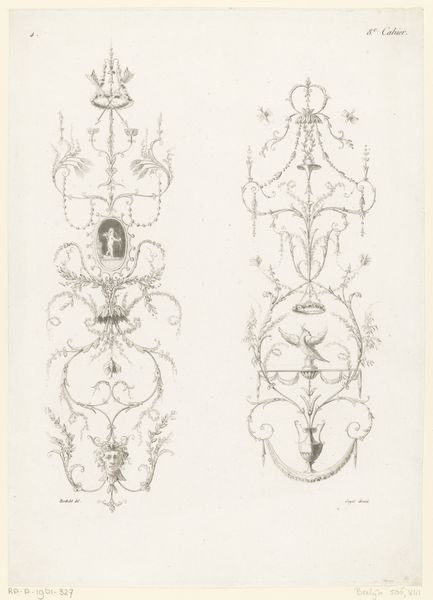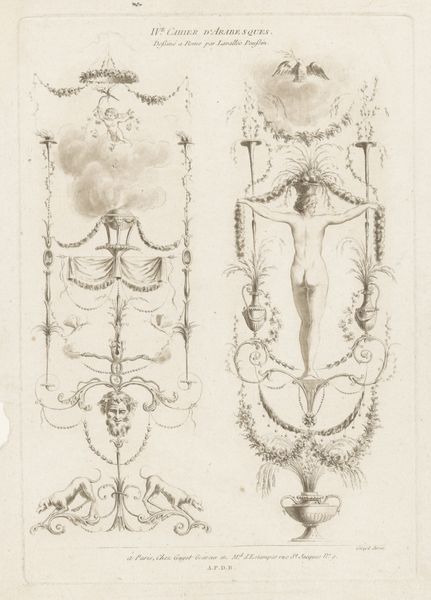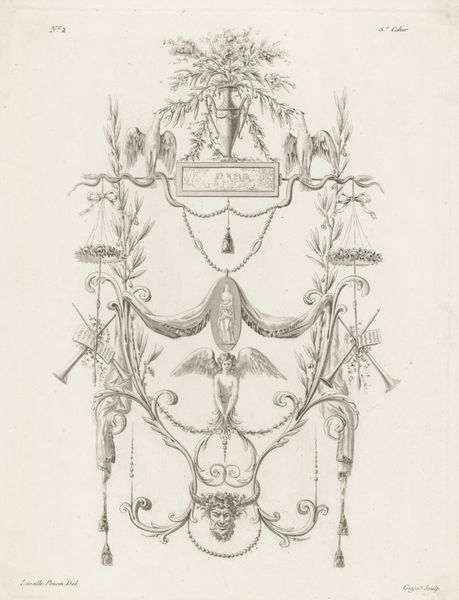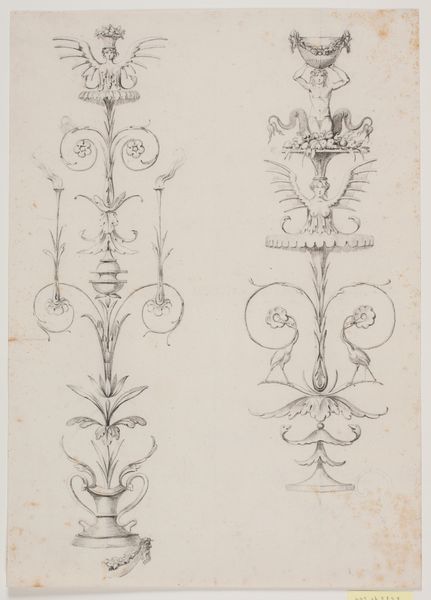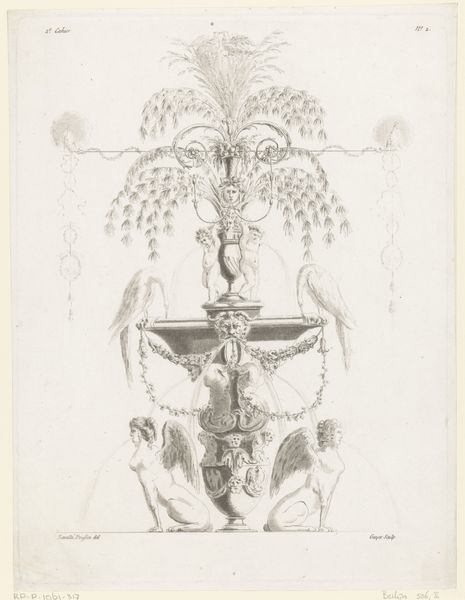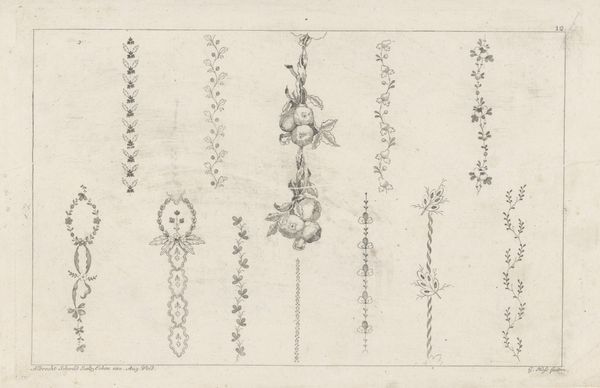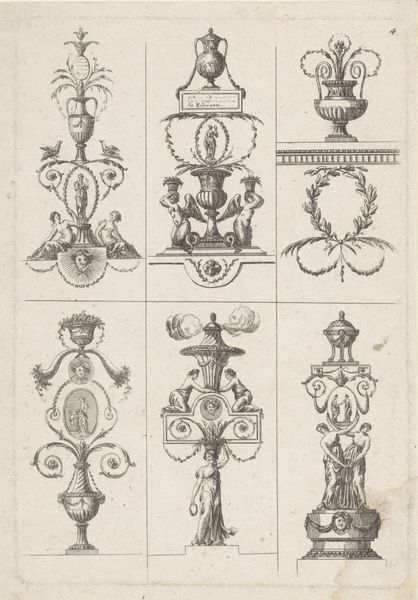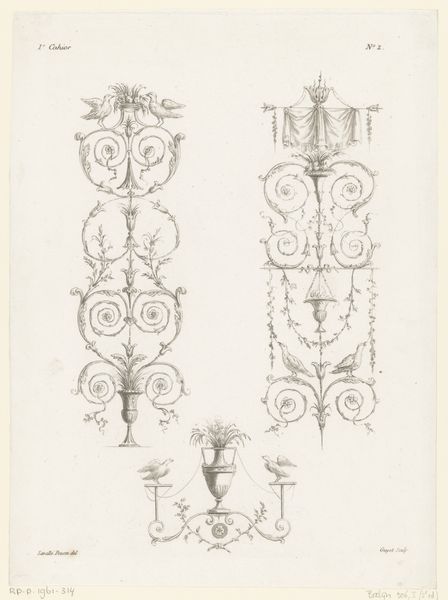
drawing, ink
#
drawing
#
neoclacissism
#
ink
#
geometric
#
line
Dimensions: height 292 mm, width 212 mm
Copyright: Rijks Museum: Open Domain
Laurent Guyot’s drawing offers two studies in arabesque design, rendered with delicate lines and monochromatic washes. The designs, intended perhaps for textiles or wallpaper, evoke a sense of Rococo elegance and intricacy. The formal structure is based on symmetry; each arabesque unfolds vertically with balanced, ornate motifs. Notice how Guyot uses line to create a rhythm of ascending and descending forms, guiding the eye through a visual dance of leaves, vases, and architectural elements. This ordered symmetry provides a sense of harmony. The drawing isn't just decorative; it embodies the Enlightenment's pursuit of order and reason, but softened with a playful, ornamental touch. Look closely and you'll notice the contrast between the rigid structure and the organic forms. It is a visual metaphor for the era's attempt to reconcile the natural world with the artificiality of courtly life. The arabesque, with its blend of natural and man-made elements, destabilizes the boundary between the two. It questions fixed categories, inviting us to consider the interplay between nature, artifice, and design.
Comments
No comments
Be the first to comment and join the conversation on the ultimate creative platform.
